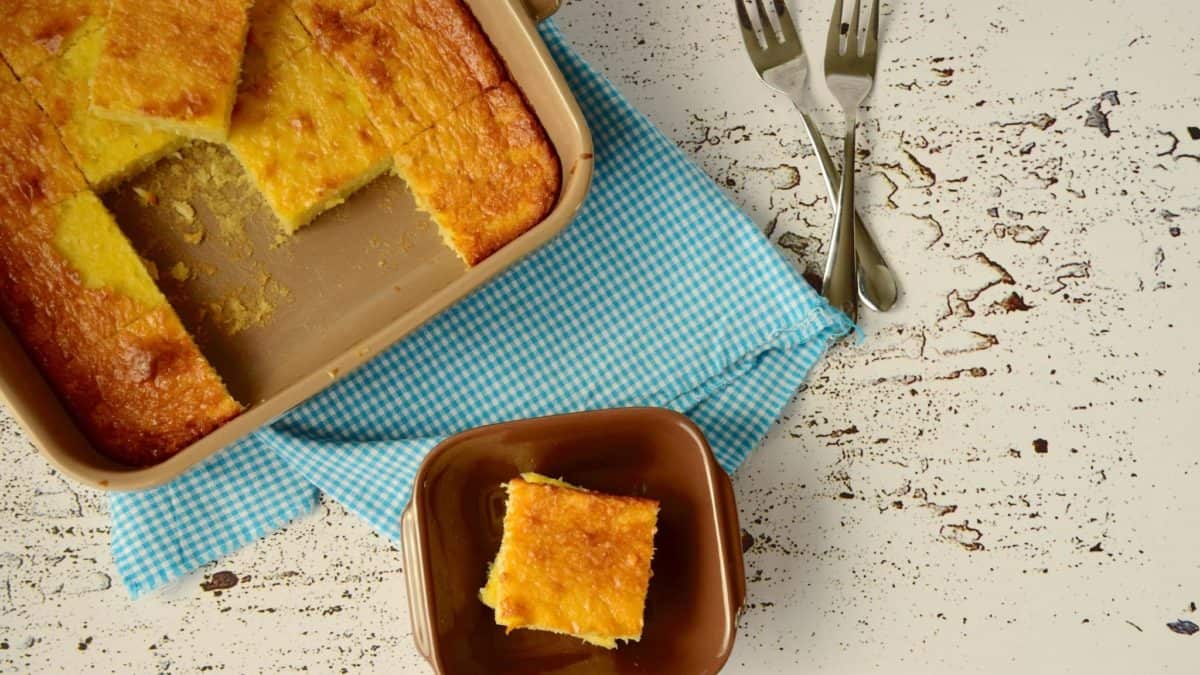Cassava Cake: The Filipino Delicacy
Cassava cake is a cake made with cassava flour, a type of flour made from the root of the cassava plant. It’s a gluten-free flour that has a slightly nutty flavor. Combined with coconut and sugar, it makes a sweet and sticky cake.


Check out our new cookbook
Bitemybun's family recipes with complete meal planner and recipe guide.
Try it out for free with Kindle Unlimited:
Read for freeIn this post we'll cover:
What does cassava cake taste like?
Cassava cake has a slightly nutty flavor and a rich, creamy texture because it’s often made with coconut milk. The sweetness of the cake depends on the type of sugar used to sweeten it.
Brown sugar or palm sugar is typically used. Cassava cake can also be flavored with vanilla, chocolate, or other flavors.
How to eat cassava cake
Cassava cake is typically served as a dessert, but it can also be enjoyed as a snack or breakfast.
It’s a popular treat in many parts of the world, including the Caribbean, South America, and Southeast Asia, the Philippines in particular.
What’s the origin of cassava cake?
The origin of cassava cake is thought to be in Southeast Asia. The cassava plant is native to this region and has been a food source for centuries.
Cassava flour was likely introduced to other parts of the world, like the Caribbean and South America, by traders and explorers.
What’s the difference between cassava cake and bibingka?
Bibingka is a type of coconut rice cake that’s popular in the Philippines. It’s usually made with glutinous rice flour and coconut milk. There are several different types of bibingka, referring to baked flour desserts, one of them being the cassava cake or cassava bibingka, which is usually sweeter.
What are some other cassava cake recipes?
There are many different ways to make cassava cake. Some recipes use eggs, while others do not. Some recipes call for baking the cake, while others are steamed.
The ingredients and methods used will vary depending on where the cake is being made.
Popular cassava cake pairings
Cassava cake is often served with coffee or tea. It can also be enjoyed with ice cream, whipped cream, or fruits like mangoes or bananas.
Cassava cake and macapuno
Macapuno is a type of sweet coconut that’s popular in the Philippines. It’s a coconut sport where almost no coconut water is left in the coconut, but everything turned into a jelly-like substance.
It’s sweeter and more coconutty, and this can be added to the cassava cake to boost its flavor.
Cassava cake vs pichi pichi
Pichi pichi is made from grated cassava, just like cassava cake, but pichi pichi is a sticky gelatinous ball of cassava and sugar, steamed and served with grated coconut, whereas cassava cake is baked with grated coconut as part of the dough.
Where to eat cassava cake?
Cassava cake is a popular treat in the Philippines and can be found in many Filipino bakeries and also more Western-type restaurants in modern segments of Manila like Makati.
Cassava cake etiquette
When cassava cake is served as part of a meal, it’s typically eaten with a fork and knife. However, when it’s served as a snack or dessert, it can be eaten with your hands.
Is cassava cake healthier than other cakes?
Cassava cake is made with cassava flour, which is a gluten-free flour that’s rich in vitamins and minerals. Cassava cake is also often made with coconut milk, a good source of healthy fats.
However, cassava cake can be high in sugar, depending on the type of sugar used to sweeten it.
So although it may not be very healthy and fattening, it’s much healthier than western types of cake.
Conclusion
Cassava cake is something you must try if you’re ever in the Philippines. Don’t expect a regular cake, though, because it tastes different and might even be an acquired taste.
Check out our new cookbook
Bitemybun's family recipes with complete meal planner and recipe guide.
Try it out for free with Kindle Unlimited:
Read for freeJoost Nusselder, the founder of Bite My Bun is a content marketer, dad and loves trying out new food with Japanese food at the heart of his passion, and together with his team he's been creating in-depth blog articles since 2016 to help loyal readers with recipes and cooking tips.
